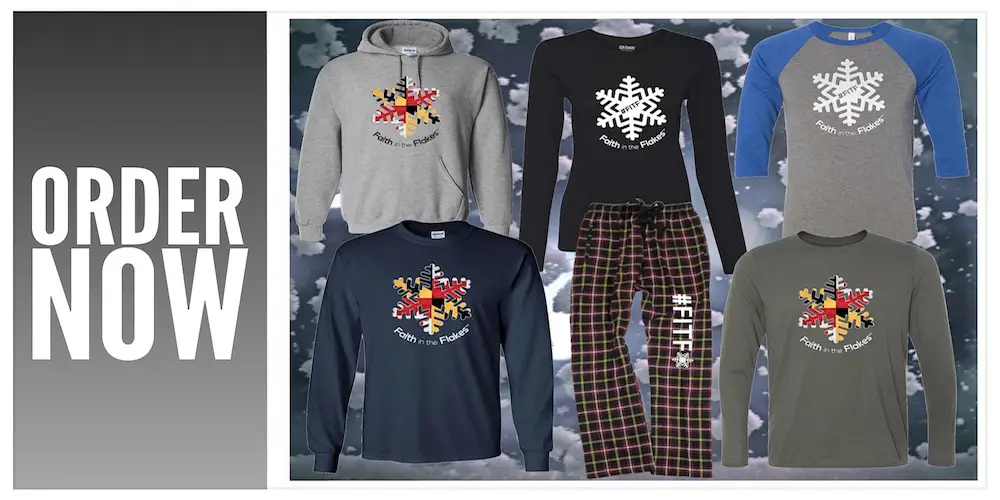Winter precipitation can best be described as a variation of frozen ‘stuff’ falling from the clouds. But what that stuff is depends on the layers of cold and relatively warmer air. In the animation here, freezing is shown as 0°C, which is the same as 32°F. The blue layer is colder than freezing, while the red shading is above freezing. In some storm set ups, a layer of warmer air can be sandwiched between cold air above and below. Here is how that can affect the type of ‘stuff’ that falls.

Winter Precipitation
SNOW: Below freezing in the clouds and on the way down.
*It can snow when the surface air is warmer, but colder snowflakes don’t melt yet.
(INVERSION: A warmer layer of air in the middle of the middle of the atmosphere)
SLEET: A thin inversion melts snow or starts out as rain, then it refreezes on the way down to the ground. This ‘pings’ when it hits and can hurt. The layer of cold air near the ground is thick.
FREEZING RAIN: A thicker inversion melts snowflakes or starts as rain. The thin layer of freezing air near the ground i snot enough to refreeze the precipitation. It will fall as rain, but freeze on contact with the surface.
RAIN: Warm enough above freezing all the way down to the ground.
*Graupel – Partially melted and refrozen snowflakes. The edges curl in and they look like tiny styrofoam balls.
Keep In Touch All Winter: Sign up for email updates on new posts
Since you may miss some posts via social media, click here for email alerts as a way to make sure you don’t miss any. *You may have to refresh that page once for your browser to clear out the images.
Popular terms
Stickage – The process of snow laying and staying on the ground. There is no melting, just piling up to start the accumulation.
Virga – Snow seen on radar but sublimating and appearing to dry up before reaching the ground.
Sublimation – Snow skipping the melting and ice crystals going to gas form. It is not evaporation but rather sublimation.
Overrunning – Warm air can rise over a cold air mass. So the clouds can be warmer than the ground. Hills can be warmer than valleys too.
Inversion – when the air temperature warms with height. It can be warmer on a hill top and colder in a valley. Same with a colder ground vs. warmer clouds.
Advection – Air moving in from one place to another
Lake Effect Snow – The cold air over the Great Lakes creating an unstable environment and heavy snow downwind. This usually stays close to the lakes and does not cross the mountains.
Alberta Clipper – A fast moving storm originating in Alberta Canada that can drop a quick few inches of snow but often comes with very cold arctic air. This can also be a Saskatchewan Screamer.
Nor’Easter – A strong storm off of the East Coast of the US. This moves to the North East, into the Northeastern US, and the winds for coastal areas come around form … the Northeast. Thus, three reasons this type of storm gets its name.
Snowstix- Ready For Delivery
We are giving 10% of each sale to programs that benefit pediatric oncology patients.
Faith in the Flakes Online Store Is Back Open By Popular Demand
PJ bottoms still inside out- They have to be to help bring on the snow.
 Get the award winning Kid Weather App I made with my oldest son and support our love for science, weather, and technology. Our 3 year anniversary of the release and our contribution to STEM education is this November. It has been downloaded in 60 countries, and works in both temperature scales. With your support we can expand on the fun introduction to science and real weather.
Get the award winning Kid Weather App I made with my oldest son and support our love for science, weather, and technology. Our 3 year anniversary of the release and our contribution to STEM education is this November. It has been downloaded in 60 countries, and works in both temperature scales. With your support we can expand on the fun introduction to science and real weather.
Please share your thoughts, best weather pics/video, or just keep in touch via social media
- Facebook: Justin Berk, Meteorologist
- Twitter: @JustinWeather
- Instagram: justinweather
 Get the award winning Kid Weather App I made with my oldest son and support our love for science, weather, and technology. Our 3 year anniversary of the release and our contribution to STEM education is this November. It has been downloaded in 60 countries, and works in both temperature scales. With your support we can expand on the fun introduction to science and real weather.
Get the award winning Kid Weather App I made with my oldest son and support our love for science, weather, and technology. Our 3 year anniversary of the release and our contribution to STEM education is this November. It has been downloaded in 60 countries, and works in both temperature scales. With your support we can expand on the fun introduction to science and real weather.
Also See:
La Nina Formed: What it could mean to our winter
Extreme Weather of 2015 balanced out on both ends
Low Snow Winters In Baltimore: Records Might Surprise You


